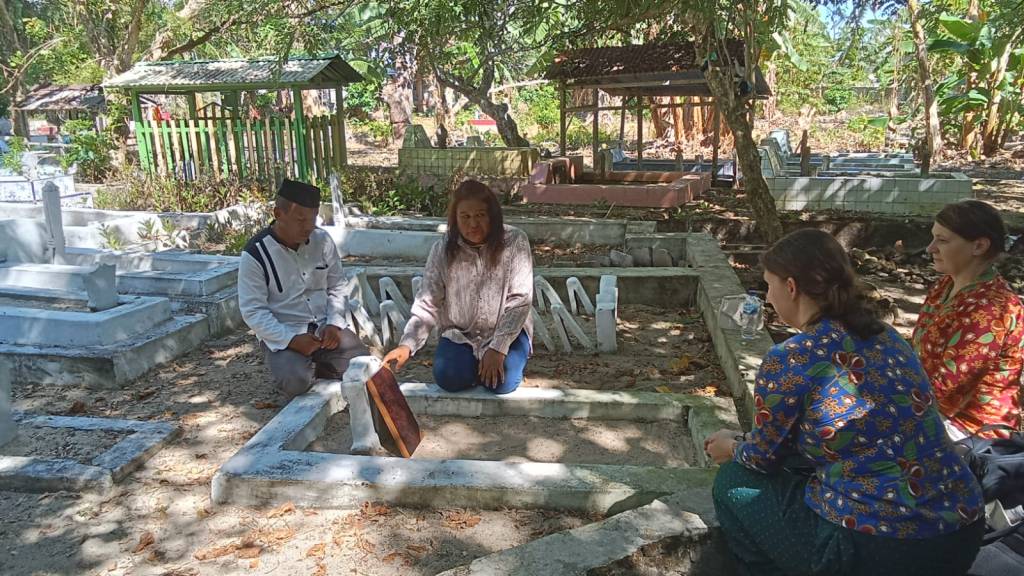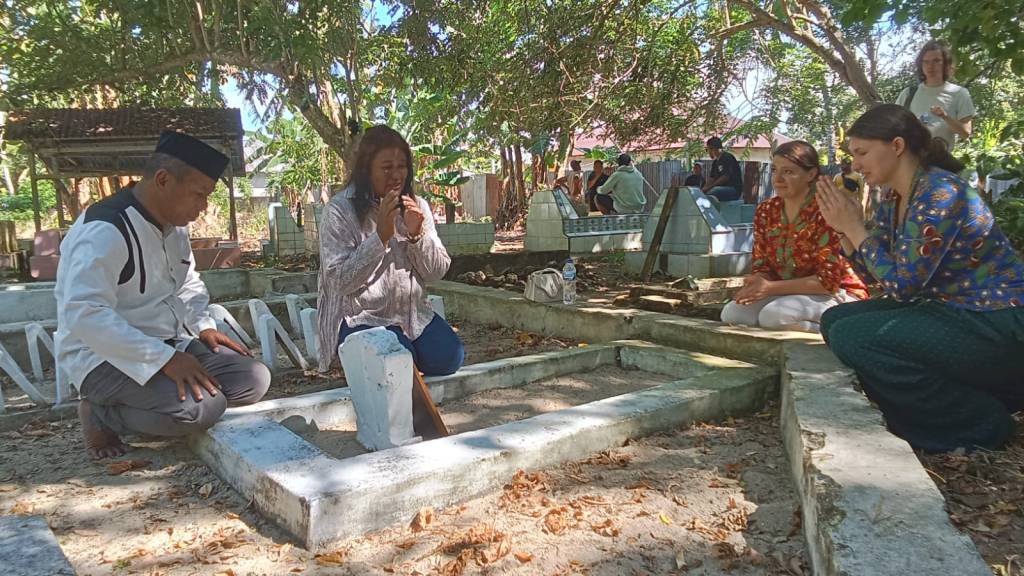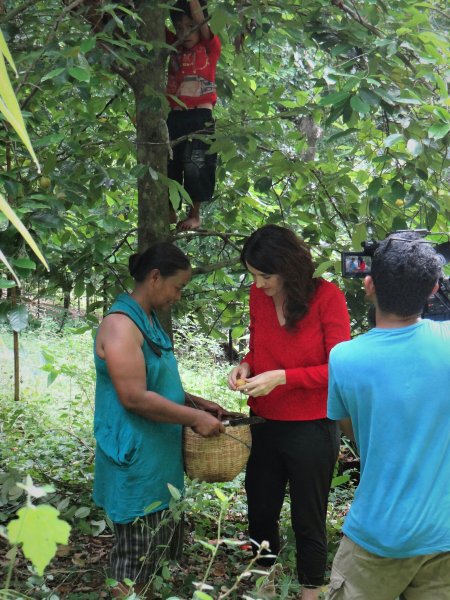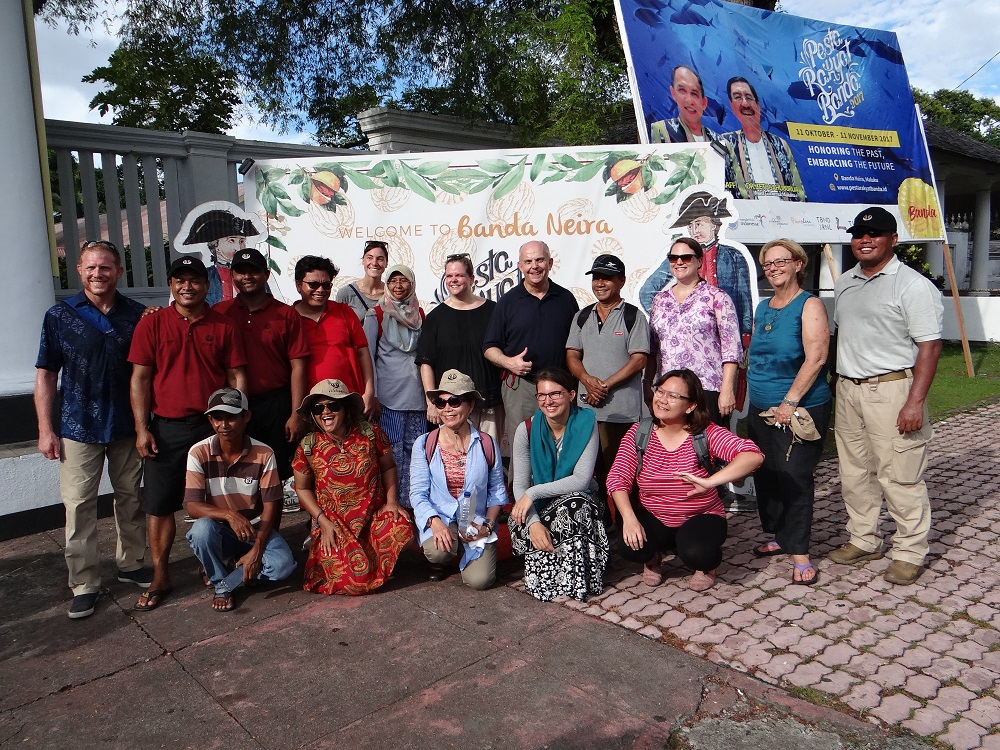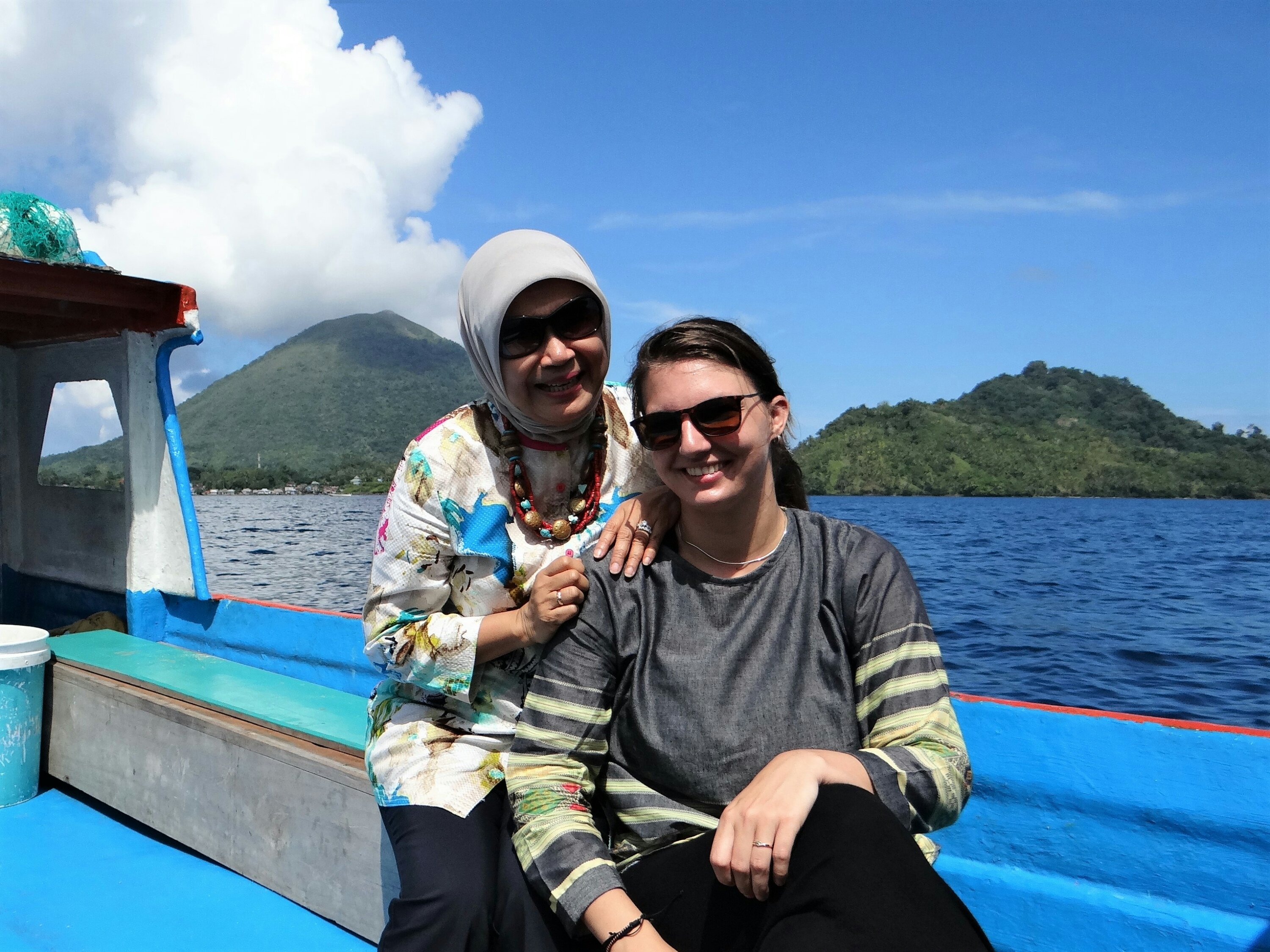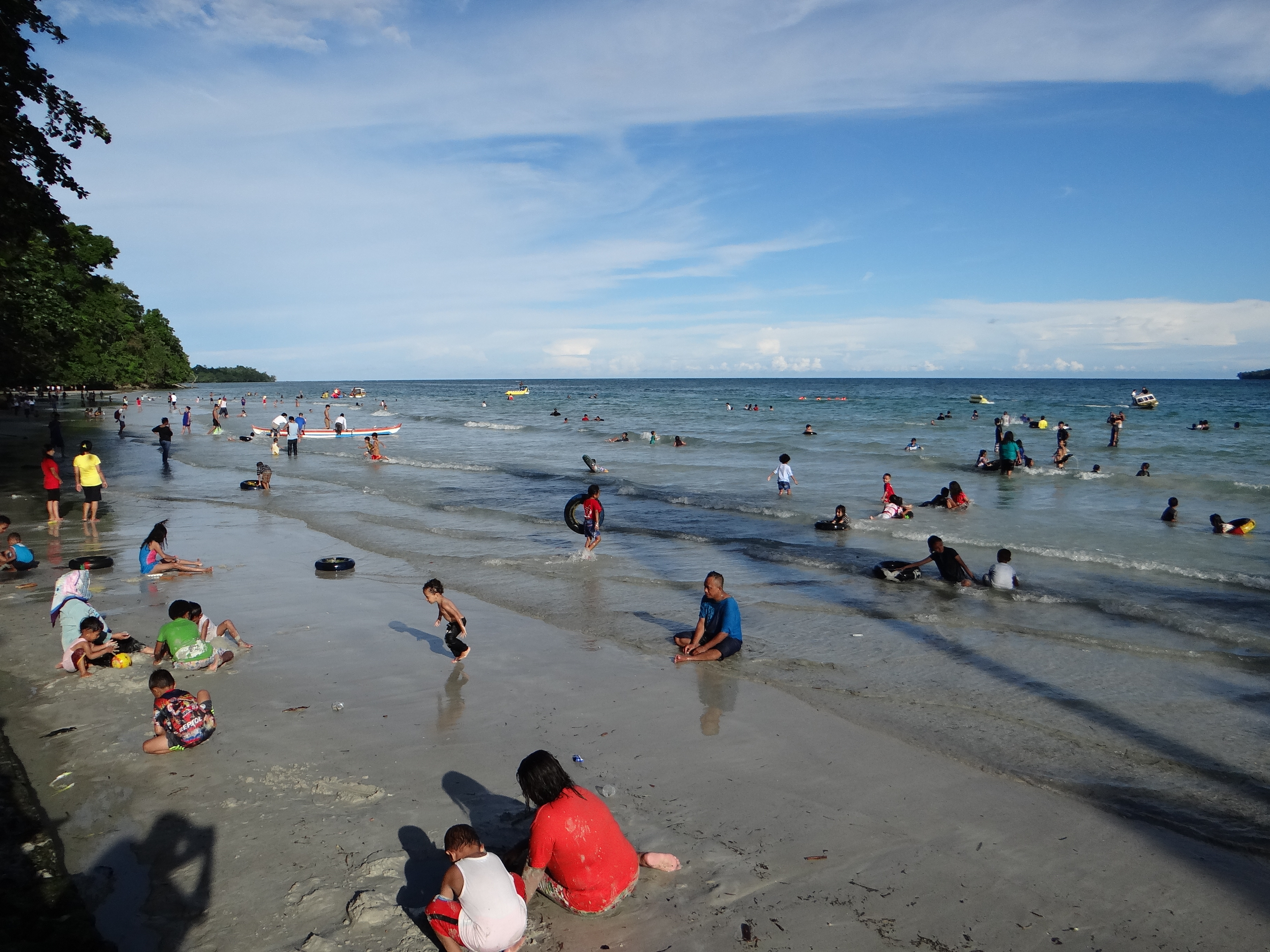Too many events have happened since my last post, so I will try to keep it brief and only select some of the most interesting stories! Before returning to Banda, Ayu and I had time to explore Kei a little bit. During one of these days we were alerted by a fellow tourists that nearby our homestay (run by a Dutchman) there are rock paintings. Of course my heart as an archaeologist began beating rapidly and luckily the kepala desa of the village was able to arrange a boat for us to go and see them. The legend of this site is that there were once 2 dragons, and that the Dutch took one of them to the NEtherlands so the other died and became a large white rock outcrop. On the “bones” of this dragon there would appear pictures when major events in the world happened. When I return to the United States I will surely try to locate if there is any study conducted on these paintings, which the local people would very much like to know about.


Despite the amazing people and beautiful island of Kei, we could not wait to return to the beautiful island Banda Neira where our friends were waiting for us. The harbor was packed, everyone was waiting to receive relatives that came on the boat for the festivities of the end of Ramadan or trying to sell Bandanese delicacies to the passengers that would continue their journey on the boat to Ambon. After freshening up at my home in Banda, we started on our mission to greet all the people that had invited us over for tea during these days.

A little background story for those not quite familiar with Islam and to describe the local practices here. For Muslims, Ramadan is considered a holy month during which Muslims are encouraged to truly reflect on their deeds in order to become a better person. Fasting is a way to learn to empathize better with those less fortunate, those that do not have clean drinking water or those that are hungry. The end of Ramadan is called Idul Fitri, which lasts a week during which everyone is encouraged to visit friends, family, neighbors and the like to exchange well wishes for the rest of the year and to share cookies. During this week lots of sweet dishes are eaten and sweet drinks like Coca Cola or Fanta are being served. The first day of Idul Fitri is extra special, on this day people meet their family and apologize for their wrong doings. Ayu and I spend this day at her family in Kei, and it was a very emotional and touching moment.


As Ramadan is the month to teach self-control (not only in food and drinking, but also in performing good deeds and controlling negative emotions), the week after it ended people celebrate massively. In Banda this means that every day there is some event somewhere, including hatam, a celebration for a child for finishing their Quran lessons, hadji, an event to pray for the safe journey of someone who will go on pelgrim to Mecca, and of course weddings! Especially the latter one has taken up much of my attention, as the son of our neighbors got married on the 5th and the preparations for this day started at least 1.5 week before the day. Everyone in the family helps with the preparations, and as they are family of my hosts I was considered to be part of the family as well. Very special to be able to observe all the different stages of preparation, and to be included in the wedding party.

In Banda there are 3 different events to celebrate a marriage. The first is malam pacar, when the bride is the center of attention to be prepared for the wedding day. It is a sort of bachelorette party, where the female relatives of both sides dress up and go the house of the bride who is wearing a beautiful wedding gown and sitting on the wedding stage. Then one by one the woman are invited to place some natural paint, made from the pacar leaf, on her finger- and toe nails. This is a typical Bandanese tradition, and a beautiful example of the use of nature in cultural practices. After this, they “kiss” the bride for the photo and make a respectful gesture to the mother and mother-in-law. When it was my turn I followed the steps, but of course made a huge blunder: my lips touched the bride and left a red mark on her cheek! Luckily it was quickly restored, but in the future I know I have to be extra careful when wearing the traditional make-up. (which is completely over the top, btw). After this the women return to the home of the groom, where there is dancing called joget.

The next morning the actual ceremony took place, for which all the female relatives are made up by a make-up artist. Everyone said I looked like Barbie, and truly I did look like a plastic doll. It is interesting to experience that the perception of beauty differs in such a way. The female and male relatives then walk from the groom’s house to the house of the bride, where the ceremony takes places. During the ceremony the groom’s family promises to accept the bride in their family and vice versa. After the ceremony everyone returns to their home, to return to the house of the bride in the evening for the reception. The bride will be wearing a different dress for each of these events, as well as the guests and female relatives. Quite the event!

Besides all the festivities, Ayu and I have found some time to conduct a few interviews. One of them was with the head of the fishermen, who explained about the unique way of fishing in Banda. Regretfully this is not a good season for fish, but he promised me to go fishing in October when I hope to return to attend the cultural festival. Besides him, we talked to two Isra’s: one from Ambon who is a enthusiastic hobbyist historian, and one that was chosen to represent Banda in the development of the KEK program (see previous blog). Lastly we traced down the owner of the building which stands in the middle of Fort Nassau, who told us he has been involved in the efforts to make Banda DOB for several years. Based on the feedback I received from my professors before I started my fieldwork, I am starting to reconsider the angle of my research. These efforts to give Banda autonomy has roots in heritage preservation, the will to be able to preserve Banda the way that Bandanese want, which is truly empowering. Again, food for further thoughts.








